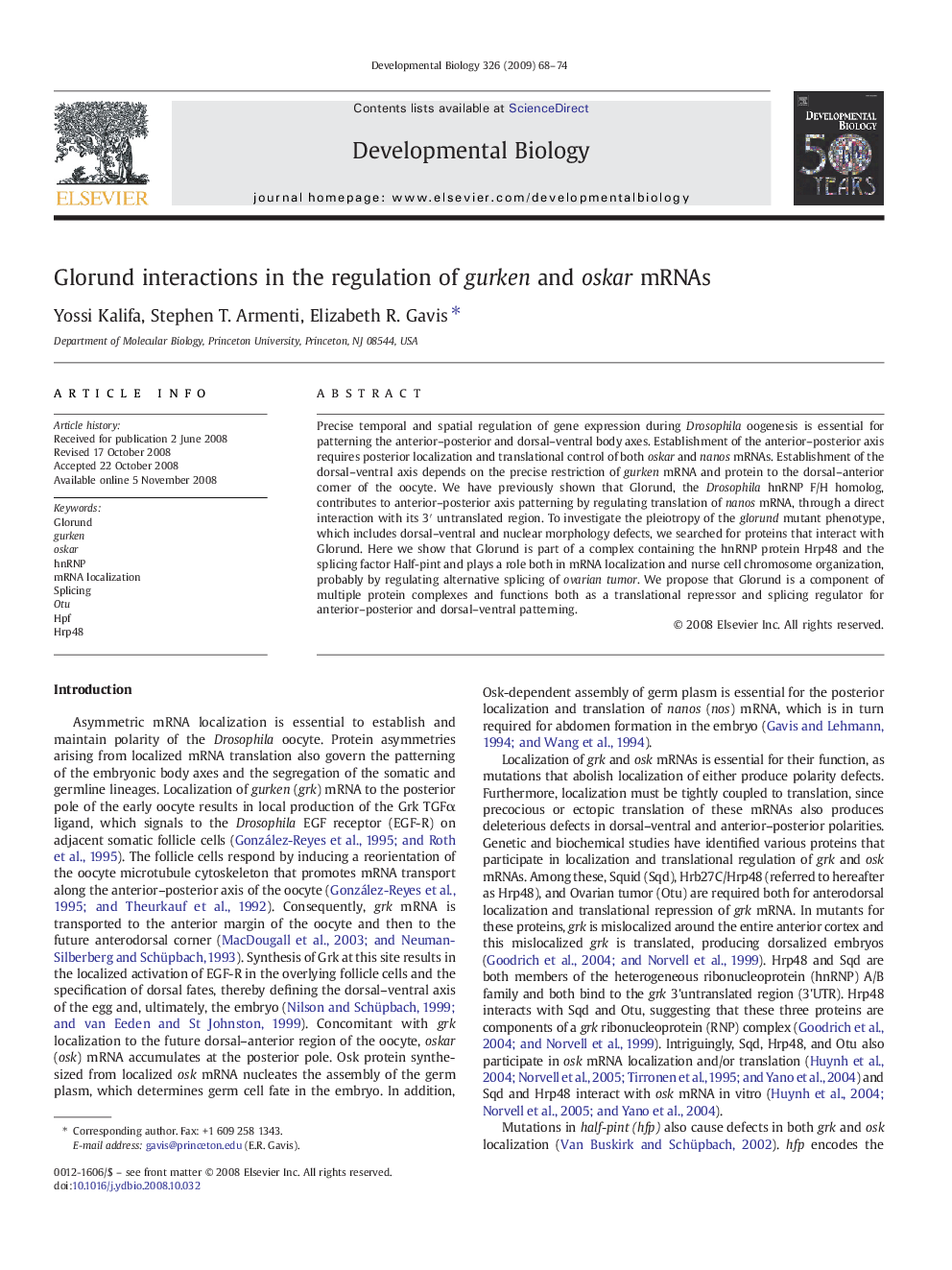| Article ID | Journal | Published Year | Pages | File Type |
|---|---|---|---|---|
| 10933532 | Developmental Biology | 2009 | 7 Pages |
Abstract
Precise temporal and spatial regulation of gene expression during Drosophila oogenesis is essential for patterning the anterior-posterior and dorsal-ventral body axes. Establishment of the anterior-posterior axis requires posterior localization and translational control of both oskar and nanos mRNAs. Establishment of the dorsal-ventral axis depends on the precise restriction of gurken mRNA and protein to the dorsal-anterior corner of the oocyte. We have previously shown that Glorund, the Drosophila hnRNP F/H homolog, contributes to anterior-posterior axis patterning by regulating translation of nanos mRNA, through a direct interaction with its 3â² untranslated region. To investigate the pleiotropy of the glorund mutant phenotype, which includes dorsal-ventral and nuclear morphology defects, we searched for proteins that interact with Glorund. Here we show that Glorund is part of a complex containing the hnRNP protein Hrp48 and the splicing factor Half-pint and plays a role both in mRNA localization and nurse cell chromosome organization, probably by regulating alternative splicing of ovarian tumor. We propose that Glorund is a component of multiple protein complexes and functions both as a translational repressor and splicing regulator for anterior-posterior and dorsal-ventral patterning.
Related Topics
Life Sciences
Biochemistry, Genetics and Molecular Biology
Cell Biology
Authors
Yossi Kalifa, Stephen T. Armenti, Elizabeth R. Gavis,
